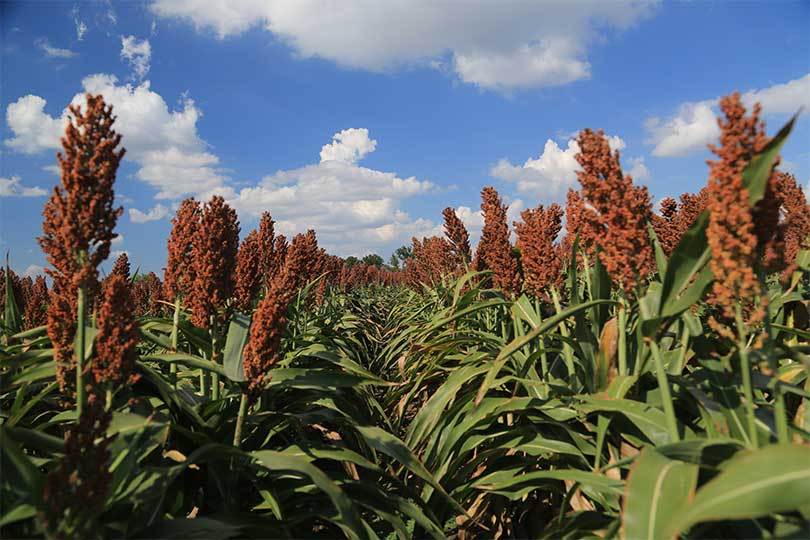By Jessica Domel
Multimedia Editor
Low commodity prices will likely mean another tight year for Texas farmers.
Average prices for cotton, rice, sorghum, wheat and corn all remain below the average cost of production, according to Dr. John Newton, director of Market Intelligence for the American Farm Bureau Federation (AFBF).
“The golden age of agricultural income of 2012, 2013 and 2014 is over. We’re not going to see those for quite a while,” Newton said. “We saw several short crops in a row. We saw oil prices rise to record high levels. That really drove investment in commodity markets and drove prices to record highs.”
Of the major crops in Texas, only soybeans are forecast to bring a price above cost of production.
Soybeans
The average cost of production for soybeans is $8.60 per bushel. The U.S. Department of Agriculture (USDA) forecasts a value of $9.40 per bushel.
“The great story in agriculture over the last 10 years has been soybeans,” Newton said. “We continue every year to export more soybeans to China. China has an insatiable demand for soybeans, not only from us, but from South America.”
Although soybean prices have come down from where they were a few years ago, they remain in the $9-$10 per bushel range.
Corn
Earlier this summer, corn farmers caught a glimpse of $4 a bushel corn on the market, but it didn’t last.
“More favorable weather across part of the corn belt has driven corn prices down on an average of 20 cents,” Newton said. “Corn at above $4 a bushel is looking like a long shot at this point in time, unless we really see that yields come down from the current USDA projection of 170.7 bushels per acre.”
The average price for corn is now $3.30 a bushel. Average cost of production is $3.66 per bushel.
Wheat
Poor yields over the past decade have pushed the cost of wheat production up to between $5 and $7 a bushel.
“It really depends on the productivity of the individual farmer,” Newton said. “If you’re growing spring wheat, maybe you can take advantage of some of these higher market prices, but different classifications of wheat aren’t feeling the same profitability that spring wheat is right now.”
The forecast price for wheat is $4.80 a bushel. That’s up from last year’s price of $3.89.
Grain sorghum
Despite growing demand for sorghum in countries like China, farmers are still fetching a price lower than the average cost of production.
“We’re talking about national average levels,” Newton said. “Each individual farmer has an opportunity to find efficiencies on their farm, utilize their own economies of scale, so they can provide a crop profitably. Maybe that means lowering input costs. Maybe that means doing things to improve yield, so you can market more commodities at these lower prices.”
In 2016, the average price of grain sorghum was $4.82 a bushel. The 10-year-average cost of production is a bit higher at $5.81 a bushel.
Cotton
Cotton farmers are also feeling the pinch, especially without a viable farm bill safety net in place for the crop.
USDA predicted a cotton price at 61 cents per pound, but farmers planted 12 million acres of cotton this year, which has led to a decrease in the price.
“I think one of the bigger factors that really plays into the cotton market is the lower price of oil,” Newton said. “Oil prices are cheaper. That means man-made fibers are also cheaper, and they’re a competitor to cotton.”
A lot of the fabrics and garments that Americans wear are actually made overseas, according to Newton. And the U.S. exports about 70 percent of the cotton that is produced here.
“The global market, global demand for cotton really drives cotton prices in the U.S.” Newton said.
The cost of production of cotton is a bit higher than 61 cents per pound.
“I think a lot of folks around the industry know that cotton producers have been facing tough times in recent years,” Newton said. “When you saw cotton prices back in 2011 at nearly 90 cents, the fall of 30 cents has really impacted a lot of growers across the United States.”
The average price of cotton since 1982 is 60 cents. The average is 68 cents over the past 10 years alone.
Rice
Rice farmers, too, face lower commodity prices, but USDA projects prices to rebound to an average of $11.70 per hundredweight for long grain rice.
T

